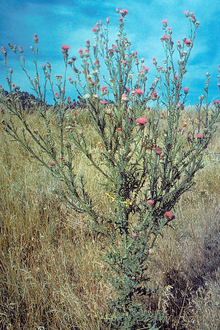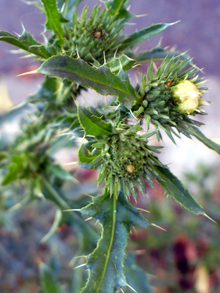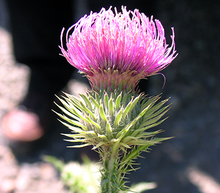Quick facts
Plumeless thistle is an invasive species. Plumeless thistle is on the Control noxious weed list meaning you must prevent the spread of this plant.
- Plumeless thistle is most commonly found on highly disturbed sites and pastures.
- It replaces native species quickly.
- Plumeless thistle reduces desirable forage species.
Plumeless thistle should be reported. The Minnesota Department of Natural Resources provides detailed recommendations for reporting invasive species.
How to identify plumeless thistle
- Plumeless thistle (Carduus acanthoides) is a biennial herbaceous plant that grows up to six feet tall.
- Often has a basal rosette for the first year and bolts the second.
Stem
- Branched stems have vertical leafy wings with spines on the tips and are covered with many spiny leaves.
- Plant produces one to several flowering stocks when it bolts.
- Flower stems are branched with spiny wings extending to the flower heads.
Leaves
- Rosettes are four to eighteen inches wide, with deeply lobed, woolly, spiny leaves.
- Bolted plant leaves are wavy, spiny, with hairy underside; long near the base and diminish in length as they ascend the plant.
- Leaves are narrower and wavier than musk thistle.
- The spiny leaves extend onto and around the stem, giving it the appearance of clusters of leafy spines throughout the plant.
Flowers
- Small (one inch diameter), purple-pink singular or clustered flower heads contain many tiny individual flowers; can be bulbous shaped.
- Blooms May to August.
Seeds
- Small, oblong, slightly curved seeds, about 0.12 inches long are contained inside a thin-walled fruit.
- They are loosely attached with tuft of hair.
Roots
- Taproot
Reviewed in 2019




